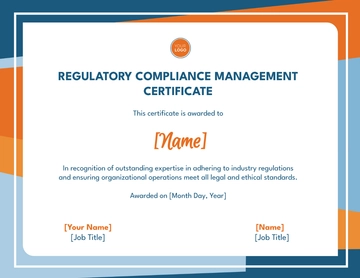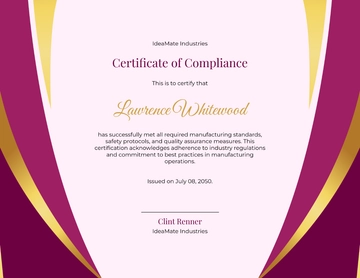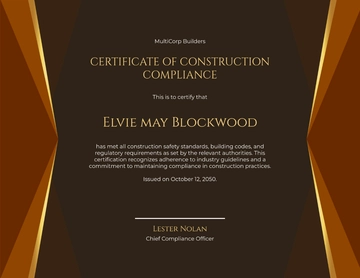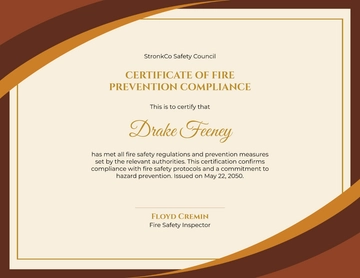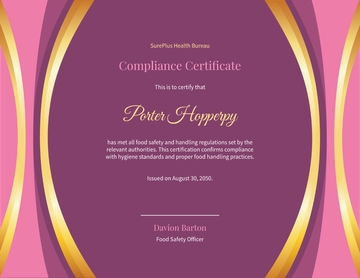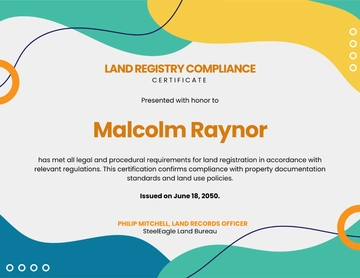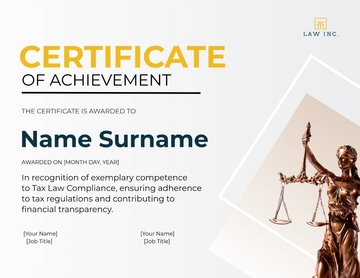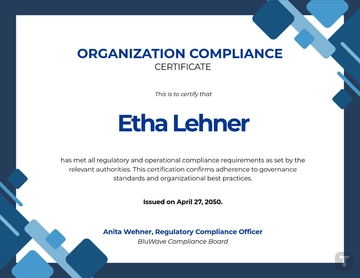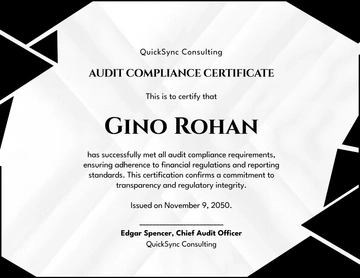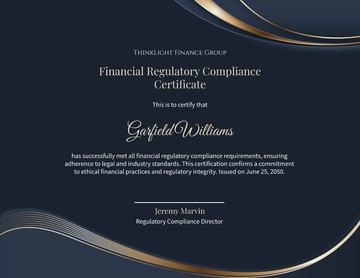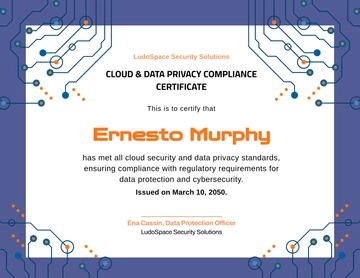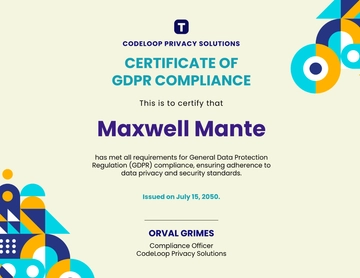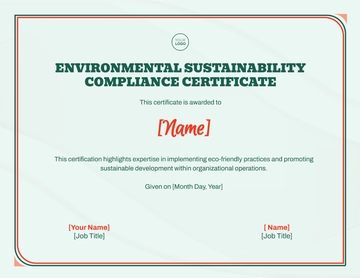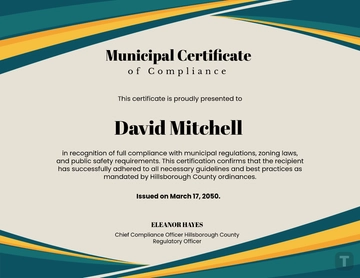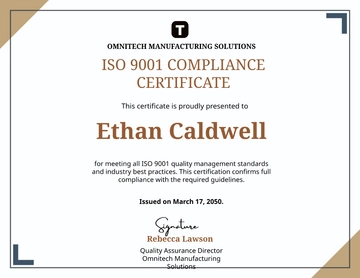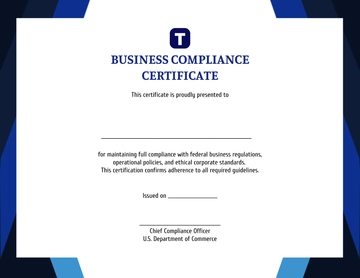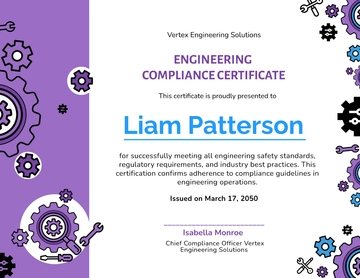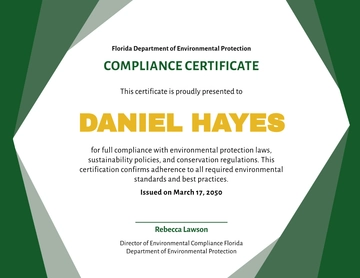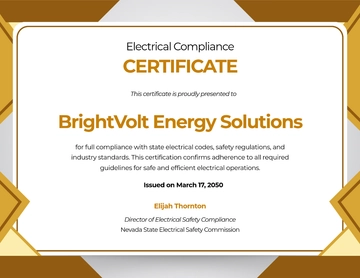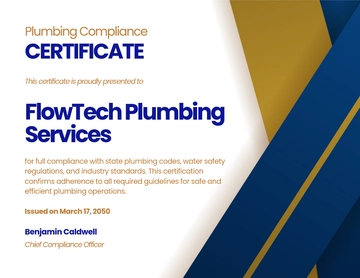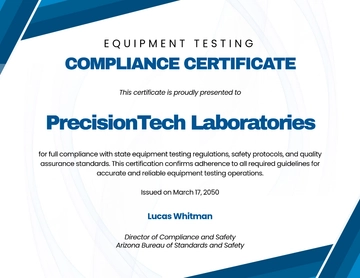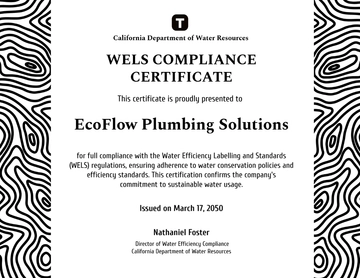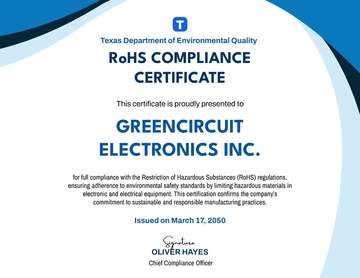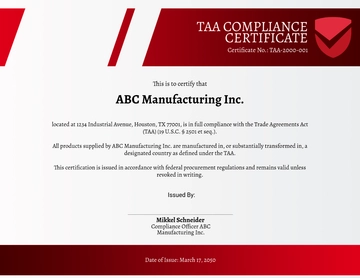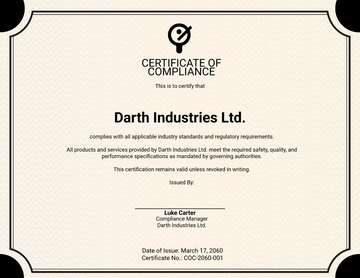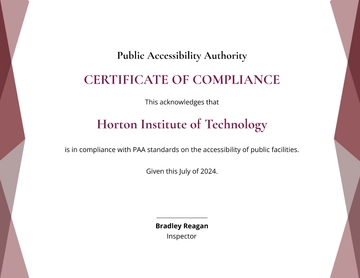Free Operations Quality Certification Proposal
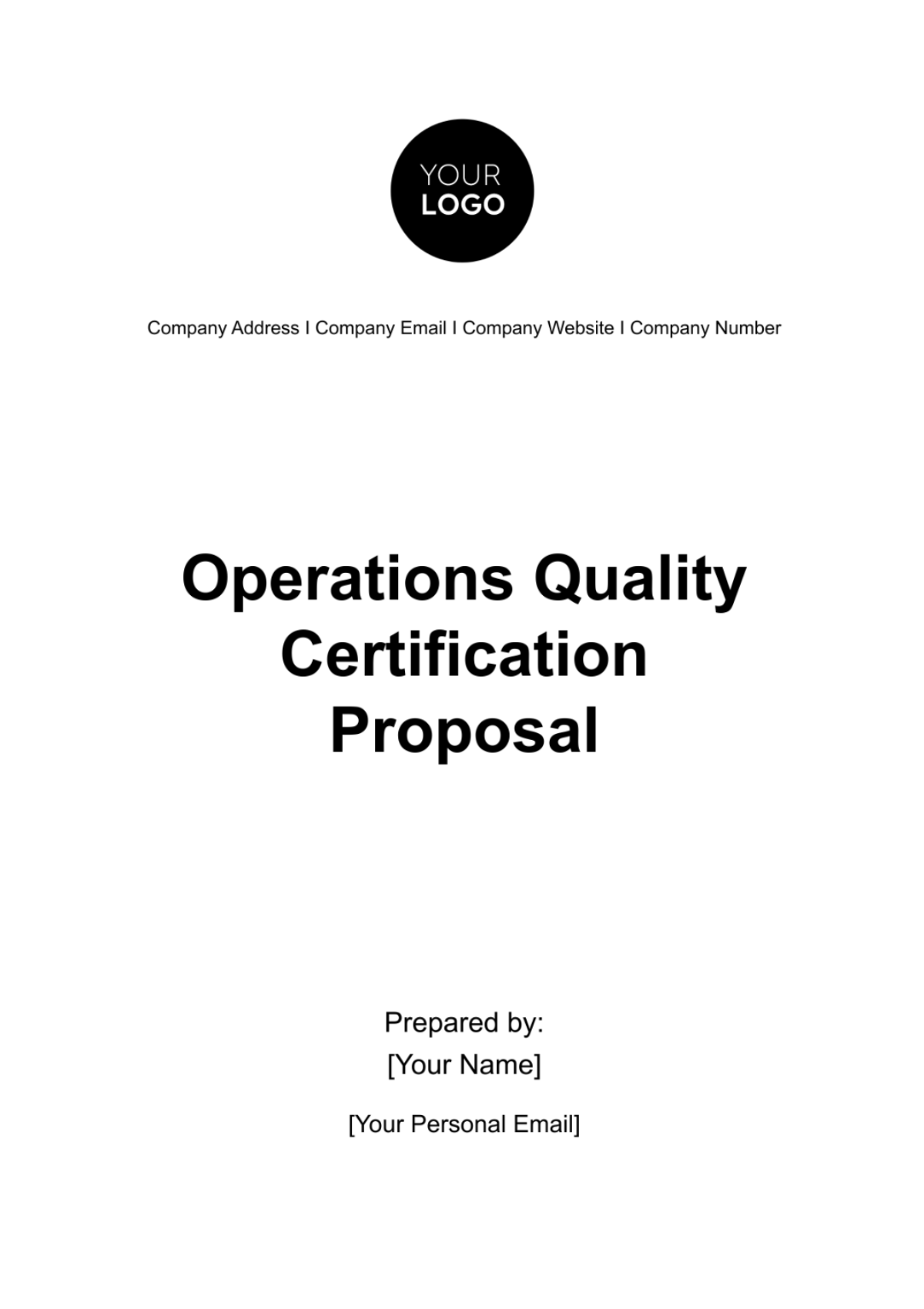
I. Introduction
The Operations Quality Certification Proposal outlines [Your Company Name]'s initiative to obtain quality certification for its operations. This proposal highlights the importance of quality management and seeks approval to pursue certification to enhance operational excellence and customer satisfaction.
II. Background
A. Current State
[Your Company Name] recognizes the need to improve its quality management processes to meet industry standards and customer expectations. Despite existing quality control measures, there is a desire to formalize and standardize these processes through certification.
B. Market Analysis
Industry trends indicate a growing emphasis on quality assurance and certification as a means to gain competitive advantage, improve product/service quality, and build customer trust. Obtaining quality certification will position [Your Company Name] as a leader in quality management within the industry.
III. Objectives
The objectives of this proposal are to:
Achieve ISO [XXX] certification for [Your Company Name]'s operations.
Enhance quality management processes to improve product/service quality, consistency, and customer satisfaction.
Establish a culture of continuous improvement and adherence to industry standards.
Strengthen [Your Company Name]'s reputation and competitiveness in the marketplace.
IV. Scope of Certification
The scope of certification encompasses all critical aspects of [Your Company Name]'s operations, ensuring a comprehensive approach to quality management. The certification will cover:
Product Manufacturing Processes: Including design, development, production, testing, and quality control procedures for all products manufactured by [Your Company Name]. This includes raw material sourcing, manufacturing processes, assembly lines, and packaging procedures.
Service Delivery Procedures: Encompassing all stages of service delivery, from order processing and customer interaction to service execution and post-service support. This includes service design, service delivery channels, customer communication protocols, and service quality assessment.
Quality Control Measures: Establishing robust quality control measures to monitor and ensure the quality of products and services throughout the production and delivery process. This includes inspection procedures, quality assurance checkpoints, defect identification, and corrective action processes.
Documentation and Record-Keeping Practices: Implementing effective documentation and record-keeping practices to maintain accurate and up-to-date records of all quality-related activities. This includes maintaining documentation of quality policies, procedures, work instructions, test results, non-conformances, and corrective actions.
Employee Training and Competency Requirements: Ensuring that all employees involved in quality management and operational activities receive adequate training and possess the necessary competencies to perform their roles effectively. This includes training on quality management principles, ISO [XXX] standards, relevant procedures, and job-specific requirements.
Supplier and Vendor Management: Extending the scope to include supplier and vendor management processes to ensure that quality standards are maintained throughout the supply chain. This includes supplier qualification, performance monitoring, supplier audits, and corrective action processes for non-compliance.
Continuous Improvement Initiatives: Incorporating a culture of continuous improvement into the scope of certification to foster ongoing enhancement of quality management processes. This includes establishing mechanisms for monitoring performance, analyzing data, identifying opportunities for improvement, and implementing corrective and preventive actions.
V. Certification Standard
The proposed certification standard is ISO [XXX], which is recognized internationally for quality management systems. Adhering to this standard will provide a framework for establishing, implementing, and maintaining effective quality management processes within [Your Company Name].
VI. Implementation Plan
A. Gap Analysis
Conduct a comprehensive gap analysis to assess the current state of quality management practices against the requirements of ISO [XXX]. This analysis will identify areas of non-conformance, potential risks, and opportunities for improvement.
Assessment Team: Form a cross-functional team comprising quality management professionals, department heads, and subject matter experts to conduct the gap analysis.
Data Collection: Gather relevant documentation, including existing quality policies, procedures, work instructions, records, and performance data.
On-Site Assessment: Conduct on-site visits and interviews with key stakeholders to observe processes, gather feedback, and identify areas of improvement.
Gap Identification: Analyze the collected data to identify gaps between current practices and ISO [XXX] requirements, focusing on areas such as documentation, process controls, resource allocation, and performance metrics.
B. Documentation Development
Develop and document the necessary policies, procedures, work instructions, and forms required to establish a robust quality management system in line with ISO [XXX] standards.
Quality Manual: Prepare a comprehensive quality manual outlining [Your Company Name]'s quality policy, objectives, scope of certification, and key quality management processes.
Procedures and Work Instructions: Develop detailed procedures and work instructions for each key process identified during the gap analysis, ensuring clarity, consistency, and compliance with ISO [XXX] requirements.
Forms and Templates: Design and implement standardized forms and templates to facilitate documentation of quality-related activities, such as non-conformance reports, corrective action requests, and audit checklists.
C. Training and Awareness
Provide comprehensive training and awareness programs to ensure that all employees understand their roles and responsibilities within the quality management system and are equipped with the necessary knowledge and skills to support its implementation.
Training Needs Analysis: Identify training needs based on employee roles, job functions, and involvement in quality management processes.
Training Programs: Develop tailored training programs covering topics such as ISO [XXX] standards, quality management principles, process documentation, audit procedures, and continuous improvement techniques.
Employee Awareness Campaign: Launch an awareness campaign to communicate the importance of quality management, the benefits of ISO [XXX] certification, and the role of employees in ensuring compliance and driving improvement.
D. Internal Audit Preparation
Prepare for internal audits to assess the effectiveness of the implemented quality management system and identify opportunities for improvement.
Audit Planning: Develop an audit plan outlining the scope, objectives, criteria, and schedule for internal audits.
Auditor Training: Train internal auditors to conduct audits effectively, ensuring they understand audit techniques, documentation requirements, and reporting procedures.
Documentation Review: Review documentation and records to ensure completeness, accuracy, and compliance with ISO [XXX] requirements in preparation for audits.
E. Certification Audit Readiness
Prepare for the external certification audit conducted by an accredited certification body to assess [Your Company Name]'s compliance with ISO [XXX] standards and eligibility for certification.
Pre-Audit Preparation: Conduct a final review of the quality management system to ensure all requirements of ISO [XXX] standards are met and documented evidence is readily available.
Mock Audits: Perform mock audits to simulate the certification audit process, identify any gaps or deficiencies, and address them proactively before the actual audit.
Documentation Compilation: Compile all necessary documentation, records, and evidence required for the certification audit, organized and presented in accordance with ISO [XXX] requirements.
VII. Resources Required
A. Personnel
Quality Management Team: Form a dedicated quality management team comprising a Quality Manager, Quality Assurance Specialists, Internal Auditors, and Subject Matter Experts (SMEs) from relevant departments.
Project Coordinator: Assign a project coordinator responsible for overseeing the implementation of the quality management system, coordinating activities, and communicating progress to stakeholders.
Training Facilitators: Engage experienced trainers or consultants to conduct training sessions on ISO [XXX] standards, quality management principles, and related topics for employees at all levels.
Documentation Specialists: Hire or designate personnel with expertise in technical writing and documentation to develop quality manuals, procedures, work instructions, and forms required for ISO [XXX] certification.
B. Training
ISO [XXX] Training Programs: Budget for training programs tailored to meet the specific requirements of ISO [XXX] certification, including courses on quality management systems, internal auditing, and documentation requirements.
Employee Training Materials: Allocate funds for the development or procurement of training materials, such as presentations, handouts, e-learning modules, and reference guides, to support employee training initiatives.
Training Facilities: Arrange suitable training venues equipped with audiovisual aids, training equipment, and comfortable seating arrangements to facilitate effective learning and engagement during training sessions.
C. Consultancy Services
ISO [XXX] Consultants: Consider engaging external consultants or certification bodies specializing in ISO [XXX] standards to provide expert guidance, assistance, and support throughout the certification process.
Auditor Training: Invest in auditor training programs conducted by accredited training providers to prepare internal auditors for conducting effective audits and ensuring compliance with ISO [XXX] requirements.
Consulting Fees: Budget for consultancy fees, including initial assessment, gap analysis, documentation review, mock audits, and certification audit preparation, based on the scope and duration of consultancy services required.
D. Technology and Tools
Document Management Software: Invest in document management software or Quality Management System (QMS) platforms to facilitate document control, versioning, access control, and distribution of quality-related documents.
Training Resources: Acquire or license training resources, such as e-learning platforms, online courses, and training modules, to supplement traditional training methods and provide flexible learning options for employees.
Audit Tools: Purchase or develop audit tools, checklists, and software applications to streamline the audit process, capture audit findings, generate reports, and track corrective actions effectively.
E. Infrastructure
Training Facilities: Ensure adequate infrastructure and facilities are available for conducting training sessions, including training rooms, audiovisual equipment, computers, and internet connectivity.
Documentation Resources: Provide access to computers, printers, scanners, and other documentation resources to support the development, review, and distribution of quality-related documents.
Communication Tools: Invest in communication tools and platforms, such as email, intranet portals, and collaboration software, to facilitate communication and collaboration among project team members, stakeholders, and employees.
F. Miscellaneous
Contingency Fund: Set aside a contingency fund to address unforeseen expenses, delays, or changes in project scope during the implementation of the quality management system.
Travel and Accommodation: Budget for travel expenses, accommodation, and subsistence allowances for employees attending training sessions, consultancy meetings, or certification audits held at external locations.
Software Licenses: Purchase software licenses or subscriptions for tools, applications, or platforms required to support quality management activities, such as document management systems, audit software, or training platforms.
VIII. Timeline
This timeline outlines the key activities and their respective start and end dates for the implementation of the quality management system and ISO [XXX] certification process.
Activity | Start Date | End Date |
|---|---|---|
Preparation Phase | June 25, 2023 | June 30, 2023 |
Documentation Development | ||
Training and Awareness | ||
Certification Audit |
IX. Budget
This budget table outlines the estimated costs associated with various resources required for the implementation of the quality management system and ISO [XXX] certification process.
Item | Estimated Cost |
|---|---|
Personnel | $10,000.00 |
Training | |
Consultancy Services | |
Technology and Tools | |
Infrastructure | |
Miscellaneous Expenses | |
Total |
X. Benefits
Implementing a robust quality management system and obtaining ISO [XXX] certification offer these benefits to [Your Company Name].
A. Enhanced Customer Satisfaction
By adhering to international quality standards, [Your Company Name] demonstrates its commitment to delivering products and services that meet or exceed customer expectations, thereby enhancing customer satisfaction and loyalty.
B. Improved Operational Efficiency
The implementation of standardized processes, procedures, and quality controls streamlines operations, reduces errors, minimizes waste, and improves overall efficiency, leading to cost savings and increased productivity.
C. Global Market Access
ISO [XXX] certification is recognized globally, opening doors to new markets and business opportunities by demonstrating [Your Company Name]'s ability to meet international quality standards and regulatory requirements.
D. Competitive Advantage
ISO [XXX] certification sets [Your Company Name] apart from competitors, enhancing its reputation and credibility in the marketplace and providing a competitive edge when bidding for contracts or attracting customers.
E. Risk Mitigation
Implementing a systematic approach to quality management helps identify, assess, and mitigate risks associated with product defects, non-compliance, and customer complaints, reducing the likelihood of costly incidents or legal disputes.
F. Continuous Improvement Culture
ISO [XXX] certification fosters a culture of continuous improvement within [Your Company Name] by establishing mechanisms for monitoring performance, analyzing data, identifying opportunities for improvement, and implementing corrective actions.
G. Supplier and Partner Confidence
ISO [XXX] certification instills confidence in suppliers, partners, and stakeholders, as it demonstrates [Your Company Name]'s commitment to quality, reliability, and compliance with industry best practices.
H. Regulatory Compliance
ISO [XXX] certification ensures that [Your Company Name] complies with relevant regulatory requirements, standards, and legislation applicable to its industry, reducing the risk of non-compliance penalties and sanctions.
I. Employee Engagement and Satisfaction
Involving employees in the implementation of the quality management system and providing training on quality principles fosters a sense of ownership, pride, and job satisfaction among employees, leading to higher morale and retention rates.
J. Measurable Performance Improvement
ISO [XXX] certification provides a framework for measuring and monitoring key performance indicators (KPIs), enabling [Your Company Name] to track progress, identify trends, and drive continuous improvement initiatives effectively.
XI. Conclusion
In conclusion, obtaining ISO [XXX] certification is a strategic investment for [Your Company Name] to enhance its quality management practices, improve operational performance, and gain a competitive edge in the industry. By aligning with international standards, [Your Company Name] will strengthen its position as a quality-driven organization committed to excellence.
- 100% Customizable, free editor
- Access 1 Million+ Templates, photo’s & graphics
- Download or share as a template
- Click and replace photos, graphics, text, backgrounds
- Resize, crop, AI write & more
- Access advanced editor
Elevate your operations standards with Template.net's Operations Quality Certification Proposal Template. This editable and customizable proposal, available on Template.net, alongside our AI Editor Tool, empowers you to outline your commitment to quality, detail certification requirements, and present a compelling case for certification. Demonstrate your dedication to excellence with our template from Template.net!
You may also like
- Gift Certificate
- Memento Certificate
- Astrology Certificate
- Marriage Certificate
- Death Certificate
- Teacher Certificate
- Gift SPA Certificate
- Christmas Gift Certificate
- Community Service Certificate
- Background Certificate
- Donation Certificate
- Divorce Certificate
- Border Certificate
- Football Certificate
- Employment Certificate
- Tooth Fairy Certificate
- Academic Certificate
- Achievement Certificate
- Adoption Certificate
- Appreciation Certificate
- Art Certificate
- Attendance Certificate
- Authenticity Certificate
- Award Certificate
- Baptism Certificate
- Baseball Certificate
- Basketball Certificate
- Birth Certificate
- Birthday Certificate
- Certificate Letter
- Champion Certificate
- Cheer-leading Certificate
- Christmas Certificate
- Church Certificate
- Coach Certificate
- Completion Certificate
- Compliance Certificate
- Computer Certificate
- Conformance Certificate
- Congratulations Certificate
- Construction Certificate
- Corporate Certificate
- Course Certificate
- Degree Certificate
- Destruction Certificate
- Diploma Certificate
- Doctor Certificate
- Dog Certificate
- Employee Certificate
- Employee of the Month Certificate
- Excellence Certificate
- Experience Certificate
- Fitness Certificate
- Funny Certificate
- Graduation Certificate
- Health And Safety Certificate
- Honorary Certificate
- Hr Certificate
- Internship Certificate
- Kids Certificate
- Kindergarten Certificate
- Leadership Certificate
- Leave Certificate
- Management Certificate
- Medical Certificate
- Membership Certificate
- Merit Certificate
- Music Certificate
- No Objection Certificate
- Painting Certificate
- Participation Certificate
- Performance Certificate
- Pet Certificate
- Photography Certificate
- Preschool Certificate
- Professional Certificate
- Project Certificate
- Real Estate Certificate
- Recognition Certificate
- Retirement Certificate
- Reward
- Salary Certificate
- Scholarship Certificate
- School Certificate
- Service Certificate
- Soccer Certificate
- Sports Certificate
- Stock Certificate
- Student Certificate
- Thank You Certificate
- Training Certificate
- University Certificate
- Volunteer Certificate
- Warranty Certificate
- Winner Certificate
- Work Certificate
- Workshop Certificate
- Yoga Certificate
- Dance Certificate
